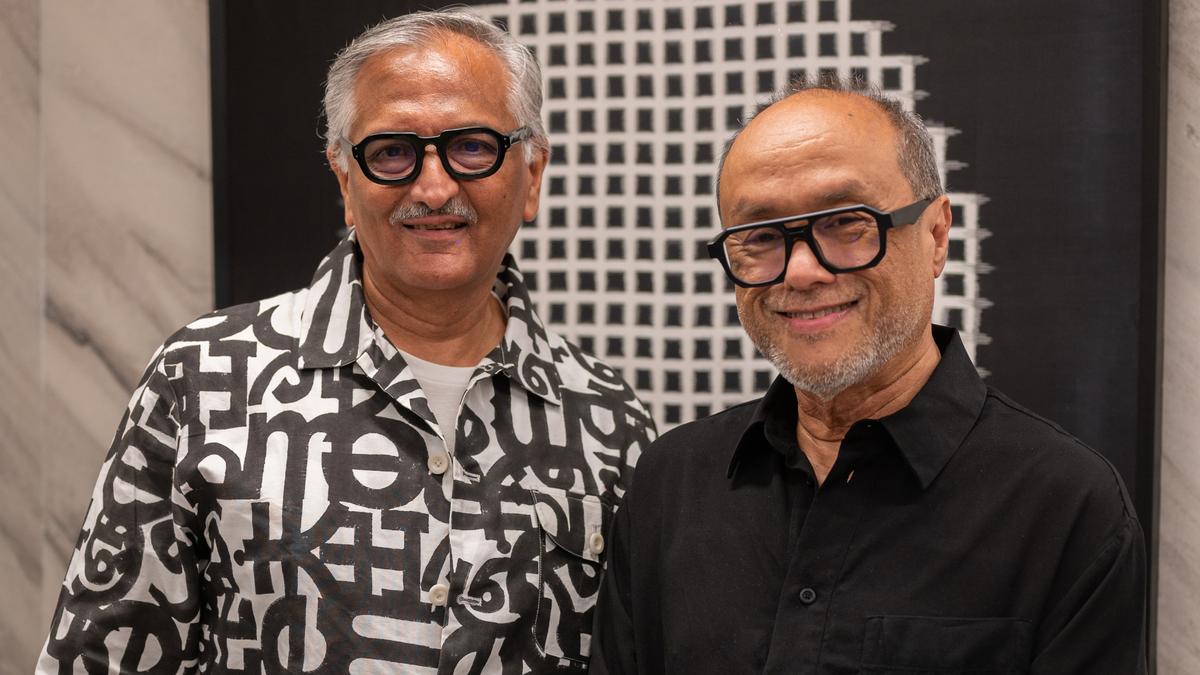
Designer duo Abraham and Thakore need no introduction; known as masters of minimalism, the OG designers David Abraham and Rakesh Thakore were in Hyderabad to launch their first flagship store at Banjara Hills.
In 1992, as classmates and friends, they started a business in Abraham’s bedroom in Delhi’s Defence Colony, based on a suggestion from their friend Martand Singh.
In today’s entrepreneurial lingo, they were a start-up. Abraham is quick to answer, “Of course we were. It all happened in my bedroom — designing, planning and even meeting clients. John Bissel, owner of FabIndia knew we had started something, he told us that the buying director of Conrad shop in London was in Delhi and we could show some of our work to her. We had something to show to her, she liked them and bought them. Back then, we started with a strict design philosophy of creating styles from our surroundings and offering them to the people. We decided to be craft contemporary and offer non-conforming fashion that lasted seasons.”
Inside the Abraham and Thakore store in Banjara hills
| Photo Credit:
Special Arrangements
The reason being: “As a brand we want our buyers to appreciate what they buy and wear it with pride too. When a piece of clothing is worn again and again, it only goes to appreciate the craftsmen who created it. The threads that are painstakingly dyed, to the stitches, go to add the perfect look, everything gets appreciated,” added Rakesh Thakore.
Their work has been exhibited at venues such as the Victoria & Albert Museum in London, the Indira Gandhi National Centre for the Arts in New Delhi, and in a Volkart Foundation-sponsored exhibition on Khadi. Their designs have also been featured in The Fabric Of India at the Victoria & Albert Museum, London, UK as part of a British Council exhibition on contemporary Indian design. The double ikat silk houndstooth sari and shirt are now in the permanent archives of Victoria & Albert Museum.
When asked if they look back and cherish their moments, Thakore says , “It is a combination of both. As we move ahead, we also look back at where we have come from.”
Abraham, on the other hand, says, “Accolades are pleasing at that point in time. We also happened to start at a time when no one was a fashion designer. If we have to compare the time we started with the present day, our work underwent a process that worked just fine then. I am very happy with the way things have changed. We cannot dwell in the past. In the context of the new digital world, speed can sweep you away if you let it. So it is important not to get carried away for instant gratification without weighing the consequences or thinking of a direction.”
The team believes in slow fashion. They share the belief that their access to a sophisticated market and clientele has helped them shape their business better. They started with Conrad in London, and then the Browns (owned by Joan Burstein) in London took them on as an agency, where they said they learnt more.
What was the thought behind their ‘iconic styling’ of wearing a belt with a sari? Abraham says, “I have a very strong fashion sensibility from working out of New York and London for a long time. I saw that a sari was portrayed as an ethnic garment; ethnic fashion is a horrible word. Just because we wear it in only a certain part of the world, it doesn’t become ethnic.”
Internationally, Abraham says, fashion is all about proportion, silhouette and shape. “For our first show in India in 2010, we decided to make the handloom sari a fashion statement because it actually is a fashion statement. We took a handloom sari, paired it with a tunic instead of a choli, added a belt, and a laptop bag as accessories and reduced the length to show the model’s clogs. As soon as the first model went out, the outfit was immediately bought by the Victoria & Albert Museum for the archives. The entire look represents the modern look of a working woman. The gatekeepers of fashion do not solely live in the west anymore. We have to define fashion.”
The brand is also known for its close association with various Indian handlooms and crafts. Which traditional craft has been the most difficult to work with? Thakore says, “It is not a craft but the craftsmen. Some of them are rigid, while others are open to suggestions and experimentation.”
Holding out a silk tunic in black with the motif of a long-stemmed lily, Thakore explains, “No one would do this. This is a non-repeat ikat. When we suggested the design, the weaver agreed to give it a shot. We displayed the waft with the design at the London Design Museum.”
A&T is also known for their striking designs in black and white. Thakore explains, “Black and white has clarity in terms of balance. Colour comes secondary to us. In design school, we are taught composition in black and white because it has the highest contrast.”
At a time when everything is about sustainability, the duo says, “First let’s be responsible.”
Published – September 05, 2024 05:02 pm IST






